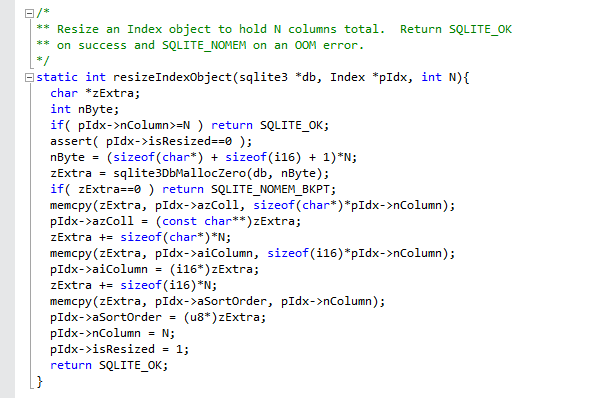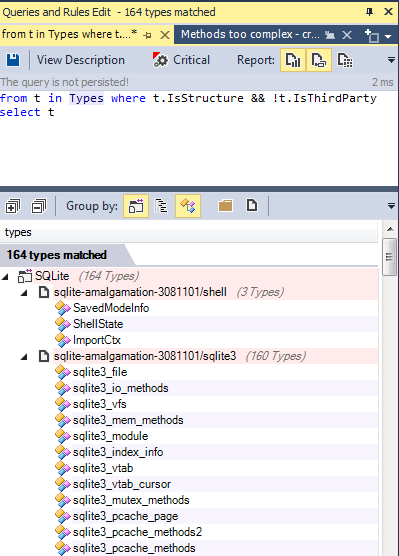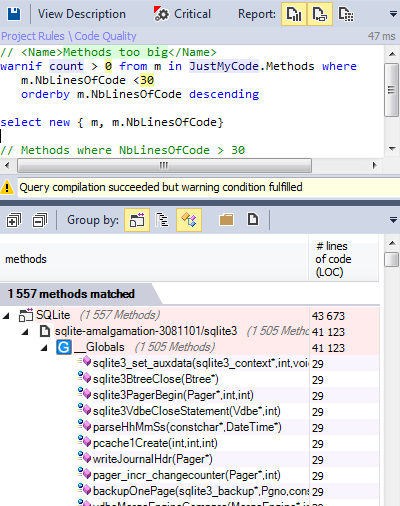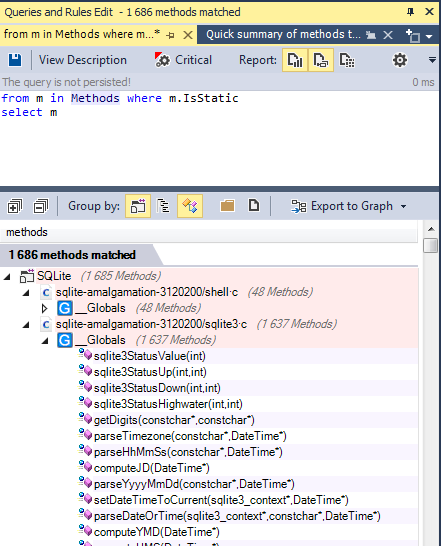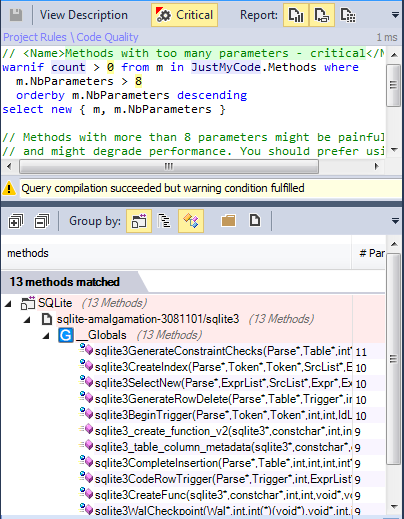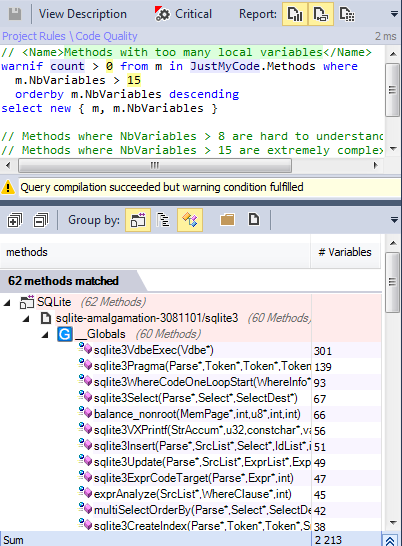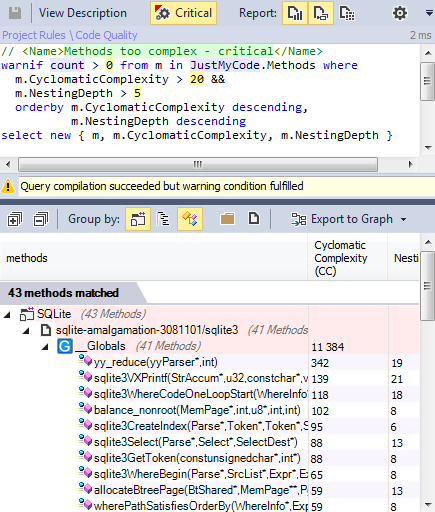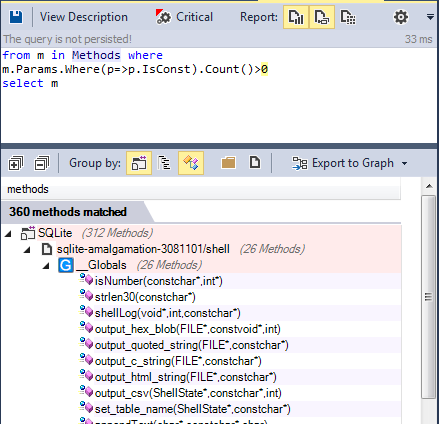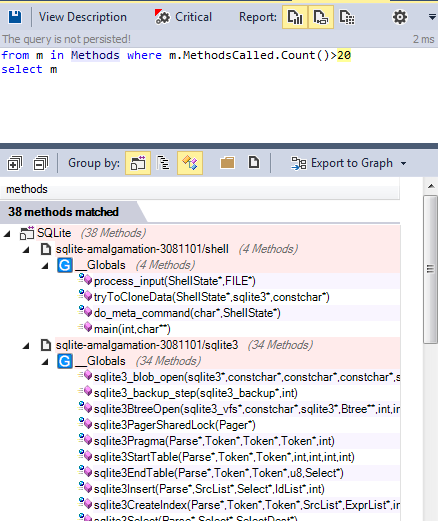16 years after its first checkin, SQLite is the most widely deployed database engine in the world. such open source project is a good candidate to learn how to make your code easy to understand and to maintain.
Let’s discover some facts about the SQLite code base, for that let’s begin with the following code snippet:
Here are some remarks concerning this function:
- The function is declared as static.
- The function return an error code.
- The function has few parameters.
- The function exists as early as possible.
- Assert technique is used to check some conditions.
- No global variable used.
- The variable naming is easy to understand.
- The method is short.
- No extra comments in the body.
- The function body is well indented.
If we navigate across the SQLite source code we can remark the coherence of the implementation. The same best pratices rules are applied to each function.
Here are some best practices to learn from the SQLite codebase:
Use structs to store your data model
In C programing the functions uses variables to acheive their treatments, theses variables could be:
- Static variables.
- Global variables.
- Local variables
- Variables from structs.
Each project has its data model which could be used by many source files, using global variables is a solution but not the good one, using structs to group data is more recommended.
Let’s search using CQlinq and CppDepend for defined structs:
Many structs are used to specify the data model.
Let function be short and sweet
Here’s from the linux coding style web page, an advice about the length of functions:
Functions should be short and sweet, and do just one thing. They should fit on one or two screenfuls of text (the ISO/ANSI screen size is 80x24, as we all know), and do one thing and do that well. The maximum length of a function is inversely proportional to the complexity and indentation level of that function. So, if you have a conceptually simple function that is just one long (but simple) case-statement, where you have to do lots of small things for a lot of different cases, it's OK to have a longer function.
Let’s search for functions where the number of lines of code is less than 30
More than 90% of functions has less than 30 lines of code.
Encapsulation
Encapsulation is the hiding of functions and data which are internal to an implementation. In C, encapsulation is performed by using the static keyword . These entities are called file-scope functions and variables.
Let’s search for all static functions by executing the following CQLinq query
As we can observe many functions are declared as static.
Function Number of parameters
Functions where NbParameters > 8 might be painful to call and might degrade performance. Another alternative is to provide a structure dedicated to handle arguments passing.
only few methods has more than 8 parameters.
Number of local variables
Methods where NbVariables is higher than 8 are hard to understand and maintain. Methods where NbVariables is higher than 15 are extremely complex and should be split in smaller methods (except if they are automatically generated by a tool).
only few functions has more than 15 local variables.
Avoid defining complex functions
Many metrics exist to detect complex functions, NBLinesOfCode,Number of parameters and number of local variables are the basic ones.
There are other interesting metrics to detect complex functions:
- Cyclomatic complexity is a popular procedural software metric equal to the number of decisions that can be taken in a procedure.
- Nesting Depth is a metric defined on methods that is relative to the maximum depth of the more nested scope in a method body.
- Max Nested loop is equals the maximum level of loop nesting in a function.
The max value tolerated for these metrics depends more on the team choices, there’s no standard values.
Let’s search for functions candidate to be refactored:
only very few functions could be considered as complex.
Be Const Correct
C provides the const key word to allow passing as parameters objects that cannot change to indicate when a method doesn’t modify its object. Using const in all the right places is called “const correctness.” It’s hard at first, but using const really tightens up your coding style.
Let’s search for functions having at least one const parameter:
Function coupling
Functions using many other ones are very difficult to understand and maintain. It’s recommended to minimize the efferent coupling of your functions.
For SQLite very few functions have a high efferent coupling:
If you can exit a function early, you should.
Early exits out of a function, specially through guard clauses at the top of a function are preferred since they simplify the logic further down in the function.
In the SQLite source code this best practice rule is applied for almost all the functions.
Conclusion
Exploring some known open source projects is always good to elevate your programming skills, no need to download and build the project, you can just discover the code from GitHub.
